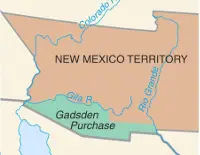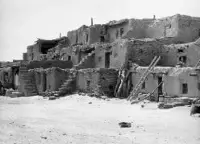The Making of the 50 States: Arizona
Part 1: In the Beginning
The first known European to venture into what is now Arizona was Marcos de Niza of Spain in 1539. With him was a monk who was convinced that he had seen a gleaming city and returned to Spanish authorities to tell his tale. The Spanish explorer Francisco Vásquez de Coronado was in search of the fabled Seven Cities of Gold and led a military expedition into the Arizona area in the 1540s. Coronado conquered one Native American settlement but didn't find any gleaming golden cities. He turned eastward and continued his quest. Arizona was nominally Spanish for the next couple of centuries. A group of Franciscan friars arrived in 1629, with the goal of establishing missions. In 1691, a Jesuit priest named Father Eusebio Francisco Kino established Mission Tumacacori, the first European settlement in Arizona. Spain eventually built more permanent settlements, including Tubac in 1752 and Tucson in 1776. When Mexico won its independence from Spain, Arizona went with it. American trappers and traders arrived soon afterward. 
Congress in 1850 created the Territory of New Mexico, which included most of what is now Arizona as well. The Gadsden Purchase in 1853 completed the boundary of modern Arizona, adding a stripe of the land along the southern border. When the Civil War started, Arizona joined the Confederacy. Union forces won the Battle of Picacho Peak in 1862 and took control of the territory. During the war, in 1863, Congress split the New Mexico Territory in half, with the western part becoming the Territory of Arizona; the first territorial capital was Prescott. By this time, ranching was common in the Arizona Territory, as was mining. Copper and silver were mined extensively, and mining towns popped up with regularity. Arizona became the country's largest copper producer. Next page > The Rest of the Story > Page 1, 2 |
|
Social Studies for Kids
copyright 2002–2024
David White



 Early cultures in what is now Arizona included the Anasazi, Hohokam, and Mogollon. Among the Native American tribes living in the area were the Apache, Hopi, Mojave, Navajo, Pueblo, and Zuni. Oraibi, a Hopi village dating to 1150, is thought to be the oldest continuously inhabited settlement in the U.S.
Early cultures in what is now Arizona included the Anasazi, Hohokam, and Mogollon. Among the Native American tribes living in the area were the Apache, Hopi, Mojave, Navajo, Pueblo, and Zuni. Oraibi, a Hopi village dating to 1150, is thought to be the oldest continuously inhabited settlement in the U.S.
